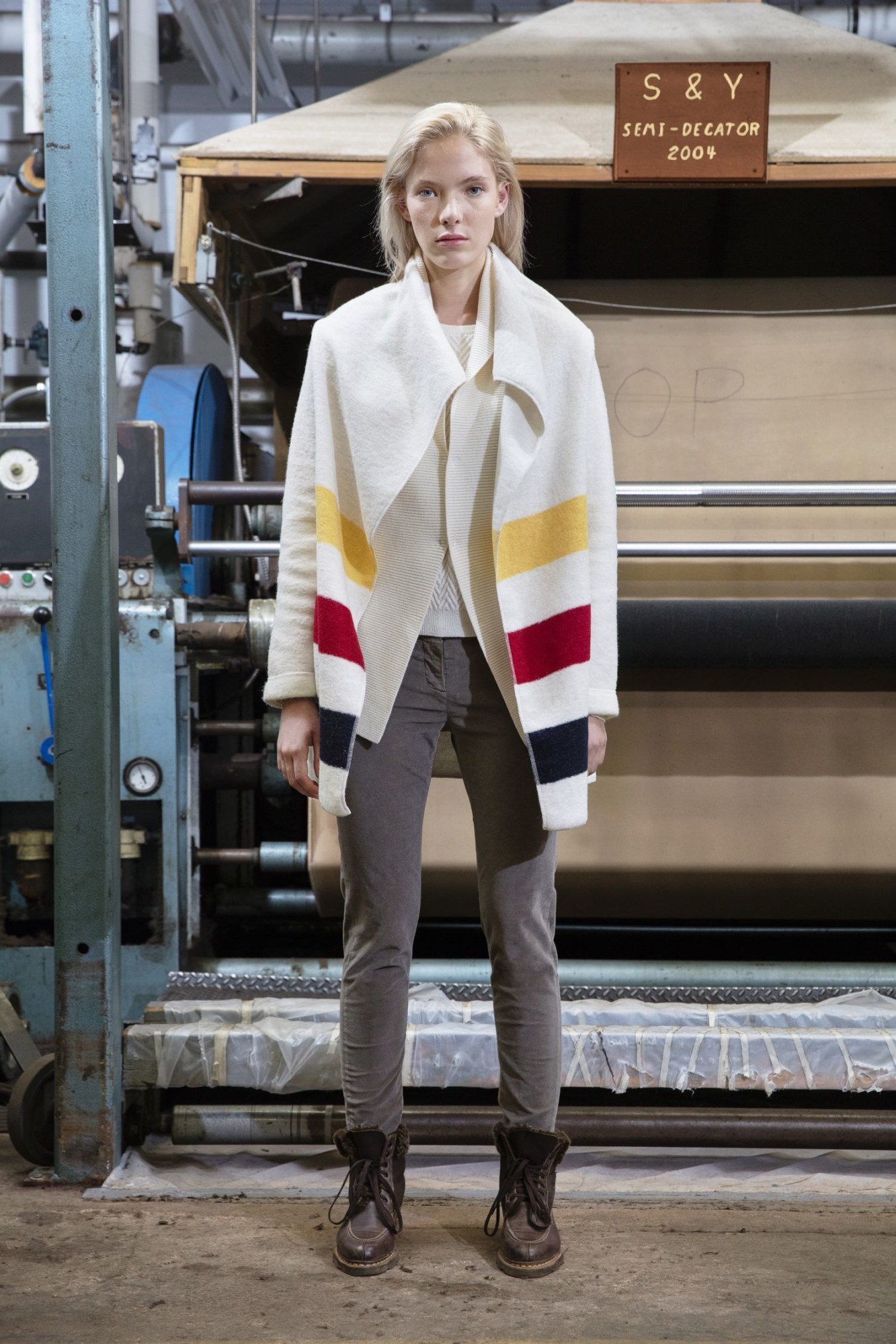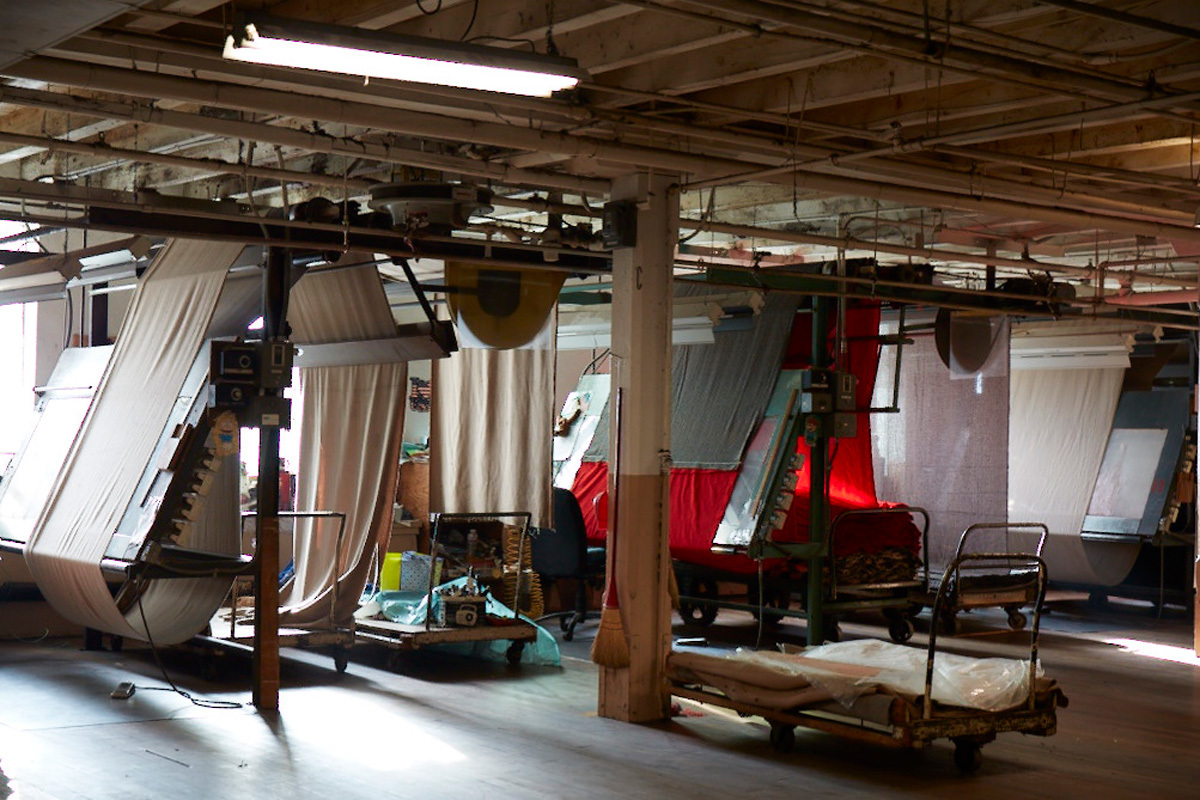Rural Pennsylvania would probably not be the first place one would think to begin a clothing empire. But, 186 years ago, when the very first Woolrich mill opened, things probably looked a little different. Because, when you consider the rugged (and currently just below freezing) landscape that their original mill sits amongst, it’s a less surprising backdrop for what would become the oldest outdoor clothing company in America. This is a place where one has a definite need for a substantial piece of outerwear.
186 years takes you back to 1830, and the beginning of the Woolrich tale – recently immigrated Englishman, John Rich, arrives in Pennsylvania, begins a small wool mill on the banks of a brook in Plum Run, and in doing so builds foundation of Woolrich as we know it today. It was those humble waters that powered his mill, allowing him to weave the hardy fabrics that he initially sold from the back of a cart to the loggers, trappers and hunters that lived and worked in the area. Later, he would piece together these fabrics into items of clothing that would go on to be worn by soldiers fighting the Civil War and even on a 1939 expedition to the Antarctic.
It’s back to this beginning that Woolrich return for Fall/Winter 2016, drafting in the talents of American conceptual photographer Jackie Nickerson to capture the campaign at the Pennsylvania mills that are now almost two centuries old. Those mills now exist as a working museum and her photographs document their many intricate parts – from the huge, ghostly looms to ceiling-high piles of raw wool, placing models wearing the Fall/Winter collection, quite literally, in amongst Woolrich’s history.
It’s a good pairing – for Jackie Nickerson, who now splits her time between Ireland and South Africa, the past has long seeped her work. But Nickerson’s depictions of that past aren’t defined in any static way – instead, her work is enlivened by an attempt to depict the ways that, within communities, the past mingles with the present through pervasive, long held traditions. Her seminal, and oft-referenced book, Farm, is one example of this arresting ability. In it, Nickerson photographs agricultural labourers in sub-Saharan Africa as they face the future whilst celebrating the rituals and lives of those who have gone before.

Tradition is also woven throughout her work Faith, a study of the hidden world of the clergy in Ireland usually veiled behind the walls of convents and churches. In the intimate portraits, Nickerson reveals a community where men and women devote their lives to ritual, as the modern world around them. It’s also evident in her series, Sapeur, where she travelled to the Congo to capture the Brazzaville “Sapeurs”, ordinary workmen who spend their wages on nostalgic, fifties-tinged suits in dandy-ish rainbow hues, even as their country recovers from a violent civil war.
It’s all part of Nickerson’s obsession with documentation – particularly the link between human beings and the surroundings in which they find themselves – whether in Africa, Ireland or the many other countries she has travelled to. The Woolrich campaign, photographed a just a couple of states across from where she was born in Boston, reflects this – for Nickerson, the mill is not something isolated, but a product of its surroundings – both defining and defined by the town of Woolrich, which grew up around it.
So, as well as the rich interior of the mill and the collection itself, Nickerson also captures what they sit amongst – half-frozen lakes or the old shaker barns that peer out onto long, deserted highways and endless grey skies. Together, the photographs propose that Woolrich the clothing brand and its relationship to its environment are somehow symbiotic – in other words: one would not exist without the other.
The Fall/Winter 2016 collection itself also looks back towards the beginning, taking the archival fabrics from the mill of as the nexus of the season. It’s part of Woolrich’s ongoing challenge of how to reinterpret their past into clothing that people want to wear almost two centuries later. Here, they do so with a reinvention of their 1850 Buffalo plaid shirts, made this season from patterns found in the archive, cotton field jackets or long down coats with a signature trim of fur around the hood. It’s all about the careful combination of Woolrich’s outdoorsy principles with the most modern of techniques, resulting in clothing that’s now practically impenetrable to the elements.
At the centre of the collection is their famous Arctic Parka, released originally for Alaskan pipeline workers in the 1970s, which has been re-made this season in merino wool. It follows Woolrich’s belief that their most recognisable pieces should never be totally re-invented, but instead improved by the materials that they are made out of, season-by-season. This time, the choice of using merino came about from a collaboration with fellow wool obsessives (and remarkably similarly named) Woolmark. Together they sought to, in their own words, look towards the “future of wool”, doing so with something called the Merino Storm System, which, as the name hints, it is both fully waterproof and windproof.

Like Jackie Nickerson’s photographs, the Arctic Parka is a kind of fitting metaphor for Woolrich – drawn from their rich history, but physically woven with materials of the future. A future that is, as we speak, being dreamt up somewhere in Pennsylvania, just a few miles from the waters where it all began.
Discover more on woolrich.eu
Credits
Text Jack Moss
Photography Jackie Nickerson for Woolrich
